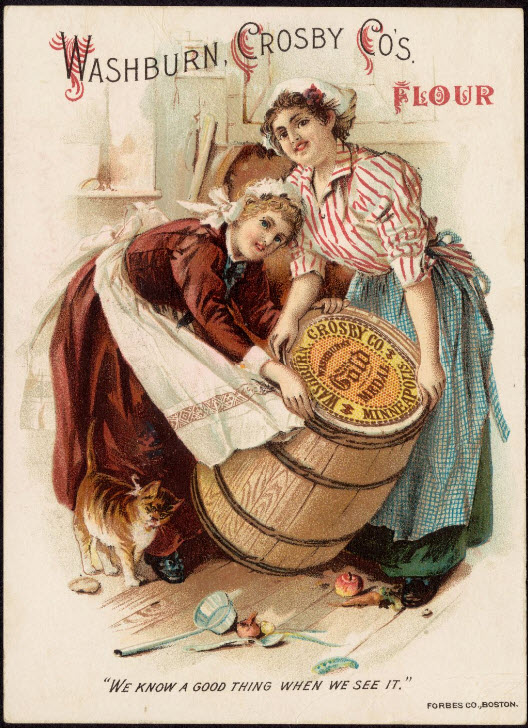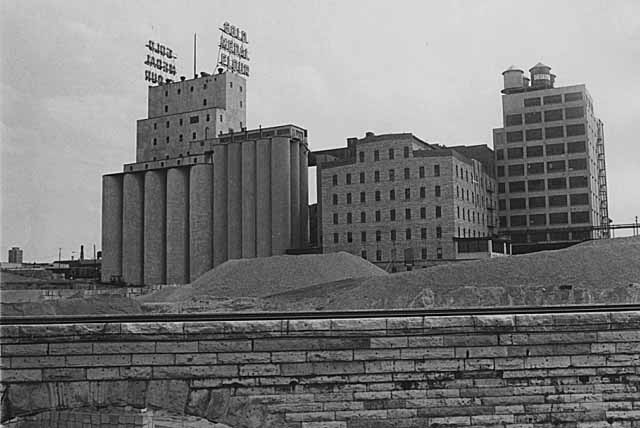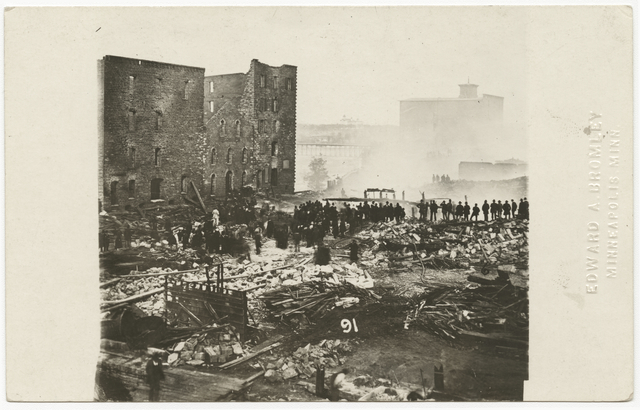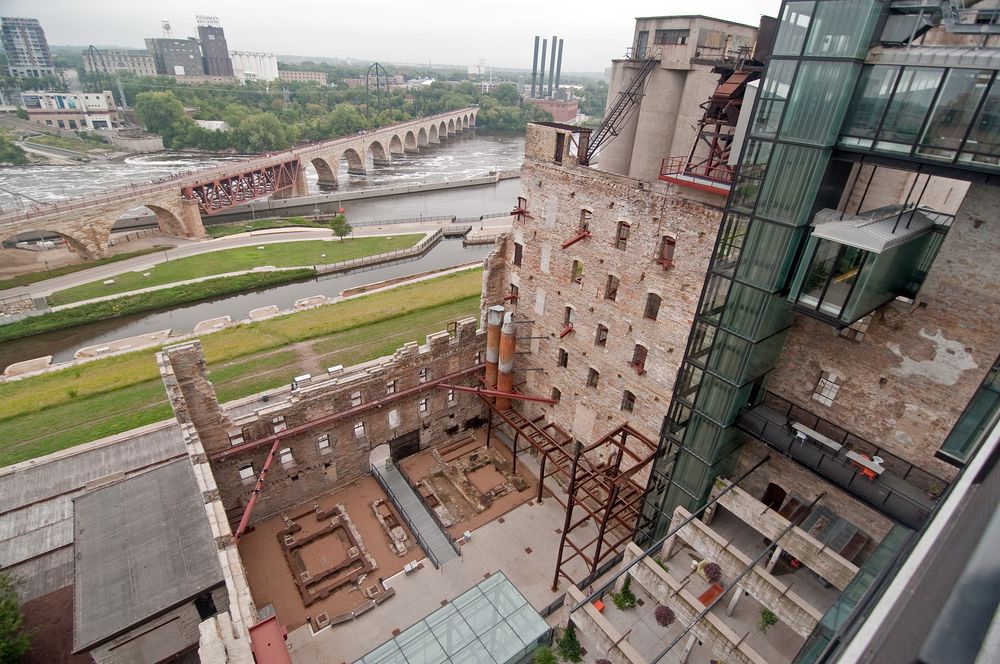The tasteful ruins on the banks of the Mississippi River from which rises the Minneapolis’ Mill City Museum serves as a reminder to the site’s dramatic history.
The site was the location of Minneapolis' largest industrial building and the largest mill in the world. The Washburn A Mill was built in 1874 by Cadwallader Washburn, a businessman from LaCrosse, Wisconsin. The building was seven story tall, and housed a flour mill powered by the flowing waters of the Mississippi River, which was diverted through a canal to turn giant waterwheels located fifty feet below street level. With 200 workers the Washburn’s mill was one of the city’s largest employers.

The ruins of Washburn A Mill now houses the Mill City Museum. Image credit: Ali Eminov/Flickr
Minneapolis at that time was considered the flour milling capital of the world, with nearly twenty flour mills operating along the river. The mills received grain from the vast wheat belt that stretches across the Northern Plains. Rails then carried the milled flour to the port city of Duluth on Lake Superior, and to eastern US destinations for export and domestic distribution.
During its early years, many considered Minneapolis flour inferior to flour produced elsewhere because the mills used spring wheat instead of winter wheat which was generally preferred. Spring wheat, which is planted in spring and harvested in the fall, better suited to Minnesota’s weather cycle but it has the disadvantage of producing a darker and easily spoiled type of flour. But in the 1870s, millers developed new techniques to grind flour that greatly improved flour quality. One of the machines they used, called the “middlings purifier”, removed the husks from the kernels of wheat by subjecting partially ground flour to blasts of air to blow away the bran. This produced a high quality white flour, even better than winter wheat flour. Minneapolis flour soon became the most desired flour in the county.

An advertisement for Washburn-Crosby Company’s flour. Washburn-Crosby later became General Mills.
One drawback of using the middlings purifier was the near constant presence of flour dust in the air that got into the noses and the eyes of the workers. But the biggest hazard was that from fire. The first disaster to befall the mill occurred in 1878, when a spark ignited airborne flour dust, creating an explosion that instantly killed all fourteen workers working the night shift. The ensuring fire spread to several adjacent mills killing four more workers. Within the night, Minneapolis’s milling capacity was reduced by one-third.
When the mill’s manager explained that the explosion was caused by rapidly burning flour dust, people were skeptic. But two professors from the University of Minnesota confirmed through a series of controlled experiments that flour dust can indeed explode. The professors concluded that two of the millstones, running dry, had rubbed against each other, causing a spark that ignited the dust.
Cautious not to let another disaster strike again, Cadwallader Washburn called upon Austrian engineer William de la Barre to install ventilation systems and dust collectors in all of his existing mills to prevent the build-up of flour dust. De la Barre also drew the blueprints for a new mill that Washburn was anxious to build to replace the lost property.

Washburn A Mill in 1976. Image credit: Steve Plattner

Washburn A Mill today. Image credit: McGhiever/Wikimedia Commons
The new plans called for a vertical construction several stories high, with exterior limestone walls four feet thick at the base and tapering off as the building rose. Each floor was dedicated to a different purpose, using gravity to transport the product from one floor to the next. New automatic steel rollers replaced traditional millstones, making it possible to produce higher volumes of flour with greater uniformity.
The new Washburn A Mill was completed in 1880, just two years after the explosion. It was bigger and technologically more advanced than the one it replaced. At its peak, the Washburn A Mill could grind over 100 boxcars of wheat into almost 2 million pounds of flour per day. Along with the Pillsbury A Mill and other flour mills powered by St. Anthony Falls, the Washburn A Mill contributed greatly to Minneapolis's development.

Ruins of Washburn A. Mill after the explosion of 1878. Image credit: Edward Augustus Bromley.
The mill continued to operate for decades even when the local milling industry underwent a decline. After the end of the First World War, cities such as Buffalo, New York, became more prominent in the milling industry. By the 1960s, changes in transportation rates, tariff rates, and energy technology led the industry to move out of Minneapolis, and the old mills fell into disuse. The Washburn A Mill closed in 1965.
In 1991, fire struck once again consuming what was left of the empty building. A decade later, the ruins of the building was incorporated into a new museum dedicated to the history of Minneapolis and how the flour mills contributed to the city’s growth. Many features of the Washburn A Mill that survived the fire were left intact, such as the turbine pits, railroad tracks, a train shed and two engine houses.

Image credit: Eric Kilby/Flickr

The Gold Medal Flour neon sign still lights above the Washburn A Mill building. Image credit: Tony Webster/Flickr



Comments
Post a Comment